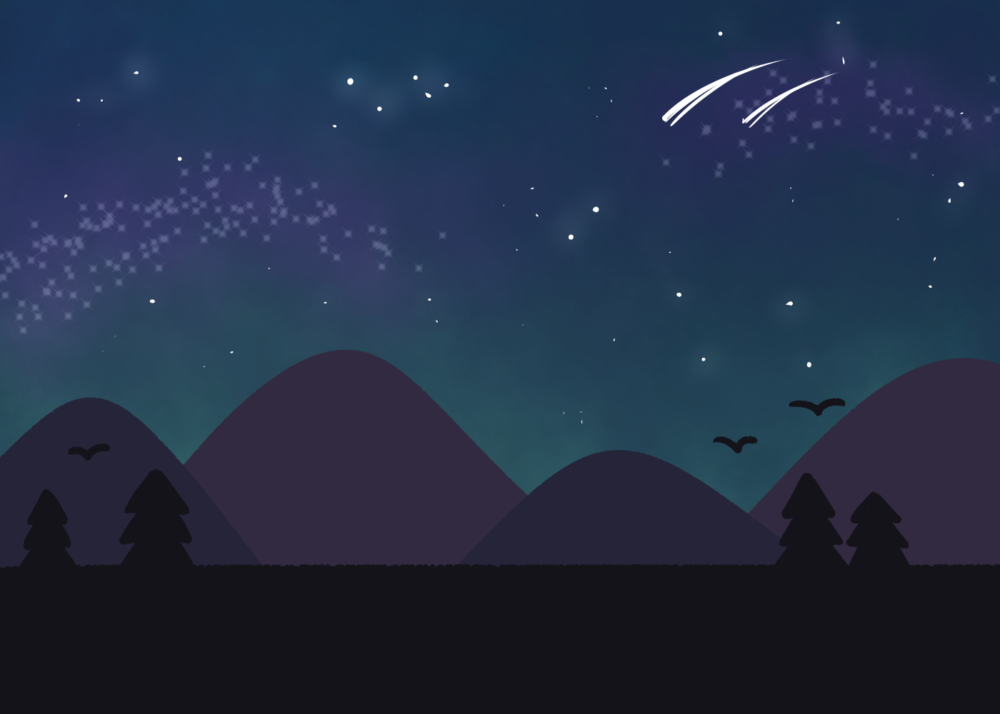By Jessica Nguyen

A new year means new out-of-this-world celestial events! Find out when they are happening and get ready for them. Although these events can be enjoyed without binoculars, you can use them for a better viewing.
January
3,4 – The new year starts with a quadrantid meteor shower. At its peak on Jan. 3, it can have up to 40 meteors per hour, which are produced by the comet, 2003 EH1.
10 – This day marks the penumbral lunar eclipse, which occurs when the moon passes through Earth’s partial shadow.
February
9 – Look outside your windows for something super…a supermoon! A supermoon occurs when the moon is fully illuminated and will occur at 11:34 p.m. It is also known as the Full Snow Moon or Full Hunger Moon to Native American Tribes.
10 – If you missed the supermoon the day before, you can see Mercury as it reaches its greatest eastern elongation from the Sun. Make sure to catch it after sunset. Don’t miss it since it will be the best time to see Mercury.
March
9 – This day marks the second of four supermoons of the year. It occurs at 9:48 a.m. and is also known as the Full Worm, Crow, Sap, and Lenten Moon.
20 – Winter officially ends and spring begins. There will be equal amounts of day and night throughout the entire world.
24 – Mercury reaches its greatest western elongation from the Sun. You can look for it before sunrise. Venus will also be at its greatest eastern elongation and you can see it after sunset.
April
8 – The third supermoon occurs at 6:35 p.m. Native Americans used to call thus moon the Full Pink Moon because of the appearance of moss pink, a spring flower, or the Egg Moon.
22, 23 – If you’re waiting for an average meteor shower, the Lyrid Meteor Shower produces 20 meteors at its peak with bright dust trails. Its meteors come from the comet C/1861 G1 Thatcher.
May
6,7 – Waiting several more days allows you to see the Eta Aquarid Meteor shower that can have 60 meteors per a hour! It is a result of the famous comet, Halley and there is better viewing at midnight in a dark place.
7 – It is the last supermoon of 2020 at 2:45 a.m. Since spring flowers appeared at this time, Native Americans called it the Full Flower Moon.
June
4 – Look for Mercury after sunset for its greatest eastern elongation.
5 – The world will be experiencing its second penumbral lunar eclipse although it is not visible from the US.
21 – You can see a ring of light around the moon as it covers the sun during the annular solar eclipse.
22 – It’s summer!
July
5 – If you have been waiting for a penumbra lunar eclipse you can see, it’s time! The moon will slightly darken.
14 – Jupiter will be at the closest point of the entire year. Jupiter is beautiful to look at and can be seen all night. With binoculars, you can even see its four largest moons.
20 – You can also see another planet during July: Saturn. It will be brighter today than any other time.
22 – Before sunrise, look for Mercury at its greatest western elongation.
28, 29 – Around the constellation Aquarius, look for the Delta Aquarid Meteor Shower and make a wish.
August
12, 13 – If there is one meteor shower you don’t want to miss, it’s the Perseids! The comet Swift-Tuttle produces its dust particles. The Perseids is known for its large number of bright meteors that always produce a good show.
13 – Venus reaches its greatest western elongation.
September
11 – It rains diamonds on Neptune because although you can’t get its jews, seeing it at its opposition is just as valuable since this is the best time to see it.
22 – Fall starts!
October
1 – Right off the bat, October starts with Mercury at its greatest eastern elongatin.
7 – If you have time early evening, peek outside for the Draconid Meteor Shower although it is a small one.
13 – Mars will be the closest to Earth it has ever been and if you want to see and or photograph it, now is the time.
31 – It’s once in a blue moon that a blue moon lands on Halloween! Check out this rare event at 6:51 a.m. Uranus is also at its opposition so look out for the blue-green planet.
November
4, 5 – Although it is a minor meteor shower, the Taurids is unique for having two separate streams that are produced by two different comets: Asteroid 2004 4G10 and 2P Encke.
10 – Mercury reaches its greatest western elongation.
17, 18 – November has another meteor shower: Leonids. Although not this year, It has cyclonic peaks every 33 years.
30 – Check out another of 2020’s penumbral lunar eclipse.
December
13, 14 – The Geminids Meteor Shower is the one meteor shower that you cannot miss. Although it is at the end of the year, it is the best shower and can produce 120 multicolored meteor per an hour. It will definitely be a good show this year since there is after a new moon. There will also be a total solar eclipse.
21- Get ready for the cold as winter solstice occurs.
21 – 2020 ends with the rare conjunction of Jupiter and Saturn, which last occurred in 2000. They will be so close that it will look like a bright double planet! There will also be a Ursid Meteor Shower.
Have fun looking at the sky, Barons!





